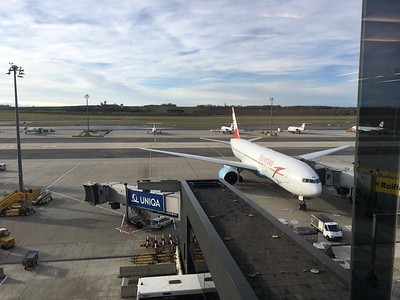
There are times of the year when bargains on airfare seem to be everywhere – particularly right before holiday seasons – but whether or not there’s an actual deal in front of us is often a matter of perception. We know our Paleolithic brains are loaded with biases that can prevent us from traveling; but the airlines are keenly aware of one particular predisposition which fools our minds into purchasing tickets we probably wouldn’t have otherwise.
 What Is The Framing Effect?
What Is The Framing Effect?
Many of the decisions we make in life are evaluations of gain and loss, which sounds very logical, except that we’re easily swayed by how a given choice is presented to us. Human beings are highly biased against perceived loss – it’s the reason ground beef is sold as 80% lean rather than 20% fat. Studies have shown in experiments that subjects, when given a choice between two hypothetical political candidates, voted for the one campaigning for 90% employment versus 10% unemployment.
The framing effect makes you more likely to take a risk when the choice in front of you is presented with some negative outcome as opposed to a positive one. You’re much more likely to pay a $100 registration fee early to avoid a $30 fine, rather than take advantage of a $30 discount for early registration of $130.
In the first case your brain makes you feel like you’ve avoided something bad, in the latter, you’ve forgone a benefit that doesn’t make you feel as good inside. All of this, despite the fact that in both cases, the choices have the same outcome.
How Companies Flip The Narrative To Get You To Take Sub-Par Deals
During peak travel times, airfare goes up due to increased demand but to maintain sales and compete with other carriers they’ll often re-frame existing promotions to catch your attention. Some examples of airfare advertisements using the framing effect:

- “Best Value” – Basically means the lowest price we offer. The word “value” often replaces “price” and “best” implies you don’t have to keep searching elsewhere.
- “Save $100” – Deals presented this way are designed to make you not want to lose that $100; which may actually be a very small percentage off the total price of a given offering.
- “Fly For $15!” – There may be one seat at this price but what such advertisements are really after are pulling you into a site. Once there and you can’t find the $15 ticket, you’ll likely take the next one up, even if it’s $159.
In the last example, you feel like you’ve already “lost” the $144 difference so are inclined to purchase immediately and forgo further searching elsewhere, avoiding another price increase.
Use Math To Jump Out Of The Frame
Our brains tend to go on autopilot whenever they can (the reason return trips always seem shorter than going somewhere) but being conscious of the framing effect before purchasing makes you much less susceptible to it. With that in mind, quantify the results the you find using the best airline search engines – if something is $50 or 15% off, calculate the total cost and keep a list. The raw prices will form a new frame you can use to stop chasing cheap flights to really save money on travel.











